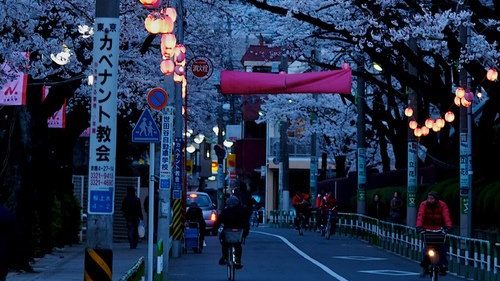JAPAN: In recent years, Japan’s cherry blossoms have bloomed earlier than usual, raising concerns among scientists and conservationists. The phenomenon has been linked to climate change and urbanisation, altering one of the country’s most cherished natural spectacles. According to the Asahi Shimbun, Kyoto experienced its earliest full bloom in over 1,200 years in 2021, when cherry blossoms peaked on 26 March—beating the previous record set in 812 AD.
Scientific causes of early blooming
Experts attribute the shift primarily to rising temperatures and the urban heat island effect. According to a report by CNN, global warming has led to shorter winters and earlier springs, causing cherry trees to bloom ahead of their traditional schedule. The urban heat island effect—where cities retain more heat due to buildings, roads, and reduced green spaces—further accelerates the process.
Professor Amos Tai of the Chinese University of Hong Kong, as cited by CNN, states that while urbanisation plays a role, climate change is the predominant driver of the early bloom. Warmer temperatures confuse the trees, triggering them to blossom prematurely.
Impact on tourism and local communities
The unpredictability of cherry blossom blooming is also affecting Japan’s tourism industry. Hanami, or cherry blossom viewing, is a cultural event that attracts millions of visitors annually. However, shifting bloom dates make it difficult for travellers to plan trips and for local businesses to prepare for the peak tourist influx.
According to BBC Travel, the cherry blossom season contributes billions of yen to Japan’s economy. Tour operators, hotels, and restaurants all rely on hanami-related tourism, but early blooming disrupts scheduled festivals and promotional activities. Local businesses are forced to adjust quickly, often struggling to capitalise on the shorter, unpredictable bloom periods.
Conservation efforts and adaptation strategies
To counteract these changes, conservationists and local governments are taking action. According to a report by The Times UK (TT), efforts include planting cherry tree species that are less sensitive to temperature fluctuations and increasing urban greenery to mitigate heat retention. These measures aim to slow down the rate of change while preserving the cultural and ecological significance of cherry blossoms.
Additionally, public awareness campaigns are being conducted to educate communities on the impact of climate change. According to Japan’s Meteorological Agency, they are also refining their forecasting methods to provide more accurate predictions, helping tourists and businesses adapt to the shifting bloom periods.
Planning your cherry blossom experience
For those planning to witness Japan’s cherry blossoms, flexibility and careful preparation are essential. The Japan Meteorological Corporation provides updated forecasts, allowing travellers to adjust their schedules accordingly.
According to TT, regions like Hokkaido experience later blooms due to their cooler climate, offering alternative options for tourists who miss the peak season in Tokyo or Kyoto. Experts also advise visitors to book accommodations with flexible cancellation policies to accommodate sudden changes in bloom dates.
For travellers wishing to experience Japan’s cherry blossoms, flexibility and careful planning are essential. Monitoring official bloom forecasts, which are updated regularly, can aid in scheduling visits. Exploring regions with varying climates, such as northern areas like Hokkaido, where blossoms bloom later, can also increase the likelihood of witnessing the spectacle. According to Nippon, Sapporo in Hokkaido is expected to see cherry blossoms begin flowering around April 28, with full bloom by May 2, 2025.
The earlier blooming of Japan’s cherry blossoms is a stark reminder of the real-world effects of climate change. This shift not only disrupts the natural cycle but also poses challenges for tourism and local businesses. With conservation efforts and adaptive strategies, Japan is working to preserve the beauty of its cherry blossoms while navigating an uncertain environmental future.

